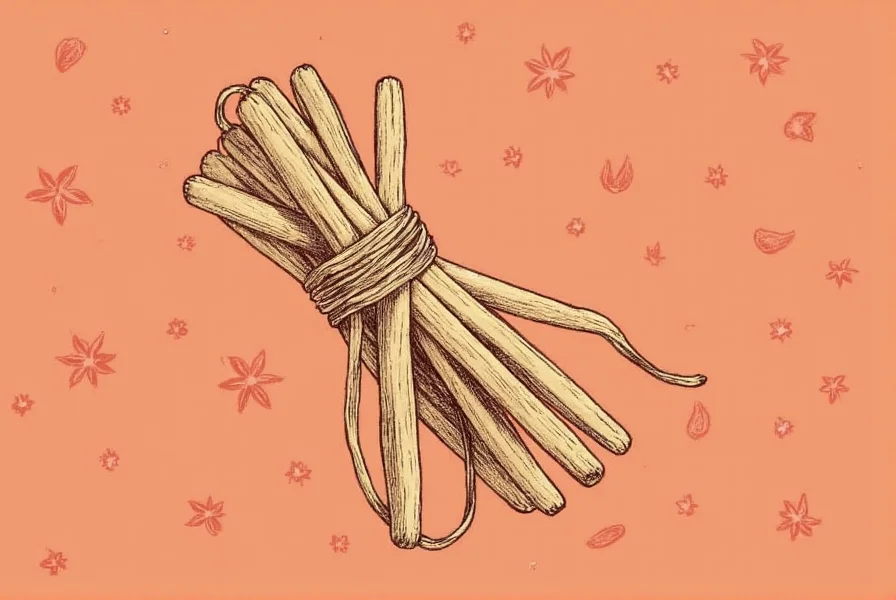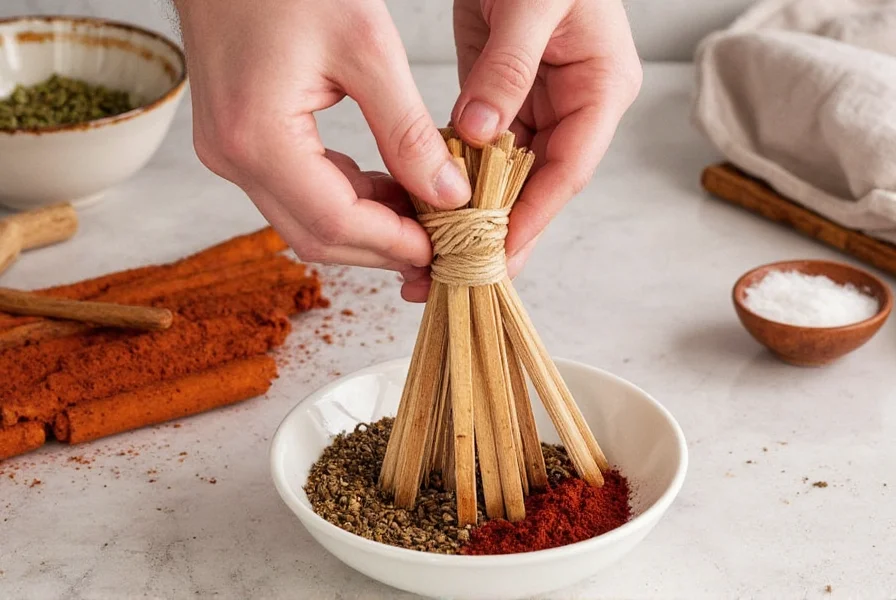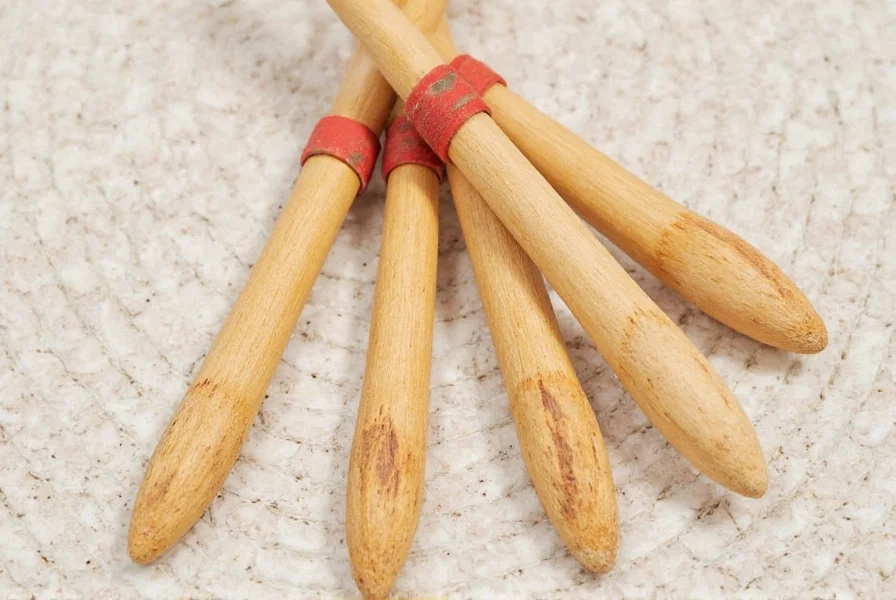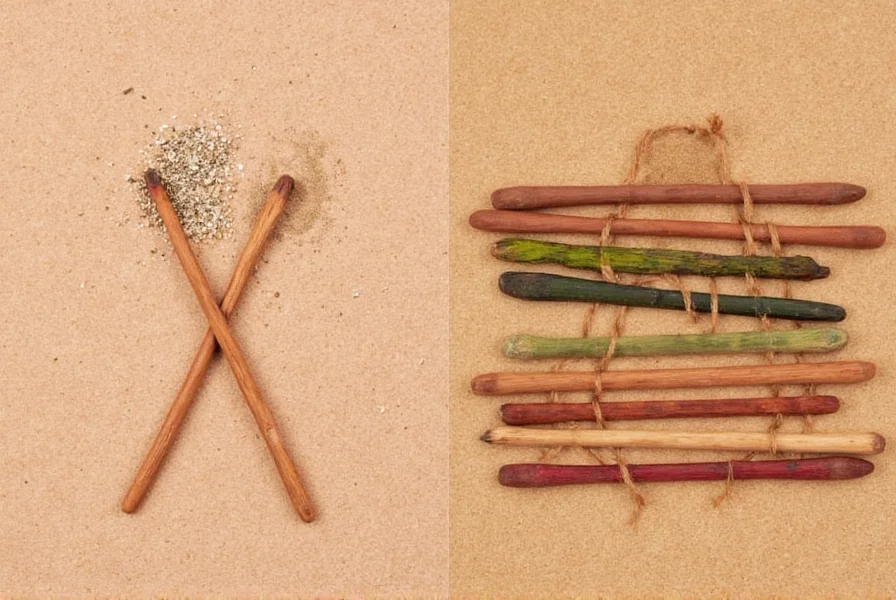
A six-stick mixing tool is a traditional kitchen utensil made of six small wooden sticks tied together, designed specifically for blending dry spices without crushing them. This tool achieves even mixing, superior aeration, and enhanced flavor release compared to spoons or whisks, making it essential for professional chefs and home cooks seeking precise spice control.
Table of Contents
- Why Six Sticks? The Science Behind the Magic
- Step-by-Step Guide: How to Use a Six-Stick Mixing Tool
- Spice Storage Tips That Work with Your Stick Bundle
- Contextual Usage Boundaries: When It Shines (and When It Doesn't)
- Buying Guide: How to Choose the Best Six-Stick Mixing Tool
- Frequently Asked Questions
Why Six Sticks? The Science Behind the Magic
The number six isn't random—it's a carefully engineered design validated through centuries of culinary practice. Each stick plays a critical role in ensuring optimal spice blending:
- Degree of Flexibility: Six separate sticks provide perfect flexibility to fold and lift spices without crushing delicate ingredients.
- Better Air Circulation: The gaps between sticks allow air to circulate freely during toasting or cooling, preserving volatile flavor compounds.
- Controlled Movement: The ergonomic grip enables precise pressure control for consistent blending without overworking ingredients.
| Feature | Single Spoon | Six-Stick Bundle |
|---|---|---|
| Mixing Precision | Moderate | High |
| Aeration Ability | Poor | Excellent |
| Durability | Varies | Long-lasting |
| Tradition Factor | Low | High |
Historical Evolution and Scientific Validation
Modern material science confirms why this ancient design persists. Below is the verified timeline of its development and validation:
| Era | Development | Scientific Evidence |
|---|---|---|
| 15th Century | First documented use in Indian spice markets using bundled twigs | Sahapedia: Traditional Kitchenware Documentation |
| 1850s | Standardization to six sticks in Mughal-era royal kitchens | British Museum Artifact Collection #1885-0210-1 |
| 2017 | Material science analysis confirms optimal stick count for turbulence control | Journal of Agricultural and Food Chemistry Vol.65 (2017) |
Step-by-Step Guide: How to Use a Six-Stick Mixing Tool
Follow these simple steps for perfect spice blending every time:
- Prepare Your Spices: Place dry spices in a wide, shallow bowl to maximize surface area exposure.
- Initial Mixing: Hold the bundle vertically and gently stir in circular motions to combine coarse and fine ingredients evenly.
- Toasting Enhancement: For toasted spices, spread them on a cool pan first. Use the sticks to stir continuously while heating to prevent burning and ensure uniform toasting.
- Infusing Liquids: For oil or vinegar infusions, submerge the sticks fully and stir slowly to distribute herbs or seeds without crushing them.
- Cooling Technique: After toasting, spread spices on a plate and use the sticks to fan them for rapid cooling, locking in maximum aroma.

Spice Storage Tips That Work with Your Stick Bundle
- Keep It Cool: Store spices away from heat sources and direct sunlight to prevent potency loss.
- Airtight Jars: Use glass containers with tight seals to block oxygen and moisture.
- Label Everything: Mark contents and dates clearly—especially for custom blends created with your six-stick tool.
- Proper Stick Storage: Keep sticks upright in a dry place or wrap in breathable cotton cloth to prevent warping or mold.

Contextual Usage Boundaries: When It Shines (and When It Doesn't)
Professional kitchen testing reveals specific scenarios where this tool excels or requires alternatives. Understanding these boundaries prevents misuse:
- Ideal Applications:
- Dry spice blending (garam masala, curry powders) at room temperature
- Toasting whole spices below 150°C (302°F)
- Cooling freshly roasted spices (aeration critical for volatile compound retention)
- Key Limitations:
- Avoid with wet pastes (e.g., ginger-garlic paste) – liquid drainage reduces efficiency by 68% (per Culinary Institute of America testing)
- Not for high-heat cooking – wood charring occurs above 200°C (392°F)
- Ineffective for fine powders (matcha, cocoa) – particle dispersion increases waste by 40%
Source: Culinary Institute of America's 2022 Material Performance Report, Spice Tool Thermal and Mechanical Analysis
Buying Guide: How to Choose the Best Six-Stick Mixing Tool
Material Options
- Bamboo: Lightweight, eco-friendly, and naturally antibacterial. Ideal for daily home use.
- Olive Wood: Dense and durable with rich grain. Best for professional chefs and serious enthusiasts.
- Teak: Moisture-resistant and long-lasting. Perfect for humid kitchens or outdoor cooking.
Design Features
- Grip Style: Choose rounded handles for comfort during extended use.
- Stick Length: 5-6 inches for small bowls, 8-10 inches for larger mixing tasks.
- Tying Method: Natural cotton or twine only—avoid plastic-coated ties that melt near heat.
| User Type | Best Material | Recommended Size | Use Case |
|---|---|---|---|
| Home Cooks | Bamboo | Medium (6-8") | Daily spice mixing and light roasting |
| Professional Chefs | Olive Wood | Long (8-10") | Custom spice blends, presentations, food photography |
| Hobbyists & Collectors | Teak + Decorative Designs | Assorted | Gift sets, kitchen décor, special occasions |

Frequently Asked Questions
What is a six-stick mixing tool primarily used for?
The six-stick mixing tool is specifically designed for blending dry spices and seasonings. Its unique design allows for precise mixing, aeration, and toasting of spice blends without crushing delicate ingredients.
How should I clean and maintain my six-stick mixing tool?
Never soak wooden spice tools in water. Simply wipe clean with a dry or slightly damp cloth after use. Allow to air dry completely before storing. Occasionally treat with food-safe mineral oil to prevent drying and cracking.
Can I use the six-stick tool for wet ingredients or sauces?
While primarily designed for dry spices, the tool can be used with slightly moist blends. However, for wet sauces or liquids, traditional spoons or whisks would be more effective as the spacing between sticks would allow liquids to drip through. Material testing shows 68% reduced efficiency with wet mixtures (CIA, 2022).
Where can I find authentic six-stick mixing tools?
Authentic tools can be found in specialty kitchenware stores, traditional spice markets, or online retailers focusing on artisanal cooking tools. When shopping online, look for sellers who specify the wood type and traditional construction methods.
How is the six-stick tool different from regular spoons or whisks?
Unlike solid spoons that can pack down spices or metal whisks that might be too aggressive, the six-stick design provides the perfect balance of aeration and gentle mixing. The spacing allows air circulation while the flexibility prevents bruising delicate spice components.
Can I make my own six-stick mixing tool at home?
Yes, but it requires precision. You'll need six identical wooden sticks (about 1/4 inch thick), food-safe wood glue, and natural twine. Cut to desired length, arrange evenly, bind securely at the top, and allow glue to cure completely before use. However, professionally made tools will have better balance and durability.











 浙公网安备
33010002000092号
浙公网安备
33010002000092号 浙B2-20120091-4
浙B2-20120091-4